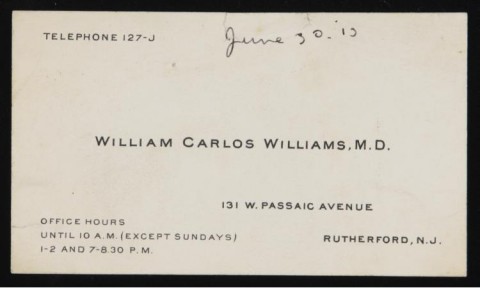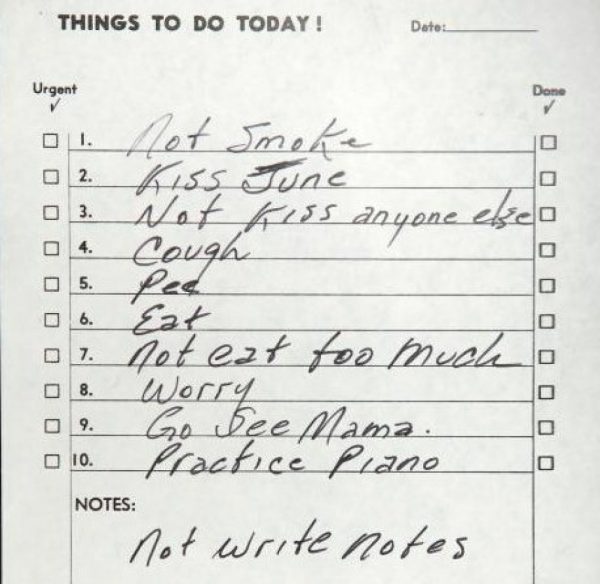Film is by nature a collaborative medium, and certainly one of the strangest and most interesting cinematic collaborations of all time has to be the 1924 avant-garde film Ballet Mécanique, which brought together the modernist luminaries Fernand Léger, Ezra Pound, Man Ray and George Antheil.
The glue that actually held the whole project together was an unknown young American filmmaker named Dudley Murphy, who was living in Paris and saw Man Ray’s experimental film Le Retour à la Raison when it came out in 1923. Murphy was so impressed that he sought Man Ray out and suggested they work together on a project. Murphy was a technically skilled and well-equipped cinematographer with several films under his belt, so the offer intrigued Man Ray. He said he would do it as long as Murphy agreed to work by the Dadaist principle of spontaneous, irrational experimentation. Murphy agreed, and the two men began filming scenes together
Murphy also sought help from the poet Ezra Pound. As Susan B. Delson documents in her book, Dudley Murphy, Hollywood Wild Card, Pound wrote a letter to his father in 1923, saying, “Dudley Murphy, whom I met in Venice in 1908, he being then eleven, turned up a few days ago. His dad is a painter, he is trying to make cinema into art.” Pound was famously generous when it came to helping other artists, and he agreed to help Murphy and Man Ray. “I knew him as a kindhearted man, always ready to help others,” Man Ray later said of Pound, yet “dominatingly arrogant where literature was concerned.”
The extent of Pound’s direct involvement in the making of Ballet Mécanique is an open question, but it’s generally believed that he exerted some aesthetic influence, particularly in the prismatic multiple image shots that call to mind some of the earlier experiments of Vorticism, a movement Pound was closely connected with. “The vortex,” Pound once wrote, “is the point of maximum energy. It represents, in mechanics, the greatest efficiency. We use the words ‘greatest efficiency’ in the precise sense–as they would be used in a text book of Mechanics.” The title of the film was actually taken from a 1917 piece by Man Ray’s friend, the Dadaist painter Francis Picabia.
In the fall of 1923 Murphy began editing the scenes he had shot with Man Ray, but by then they were running out of money. Pound suggested that his friend the cubist painter Fernand Léger might agree to see the project through to completion. Man Ray knew of Léger’s domineering personality and wanted no part of it. He left the project and asked Murphy (with whom he was still on friendly terms) to make sure his name was left out of the credits. Pound also arranged for the wealthy American writer and art patron Natalie Barney to commission a musical score to accompany the film. Pound chose a young American composer he had met earlier in the year named George Antheil, who lived above Sylvia Beach’s Shakespeare and Company bookstore.
Antheil accepted the commission but went his own way, showing no interest in even seeing the film while he was working on the music. “From the outset,” writes Delson in her biography of Murphy, “the film and the score led remarkably separate lives. In his letters to Pound during this period, Antheil made little or no mention of the film.” Not surprisingly, the film and music did not match. The music was twice as long as the completed film. In fact the film would eventually be released without the music, and the two have only rarely been exhibited together.
Although Antheil eventually composed several variations of his score, the version he finished in 1924 calls for a bizarre group of mechanistic or industrial-sounding instruments, including 16 player pianos, seven electric bells, three airplane propellers of varying sizes, and a siren. In his manifesto “My Ballet Mécanique: What it Means,” Antheil describes his accomplishment in words that are perhaps more bizarre than the airplane propellers and siren:
My Ballet Mécanique is a new FOURTH DIMENSION of music. My Ballet Mécanique is the first piece of music that has been composed OUT OF and FOR machines, ON EARTH. My Ballet Mécanique is the first piece of music that has found the best forms and materials lying inert in a medium that AS A MEDIUM is mathematically certain of becoming the greatest moving factor of the music of future generations.
Mathematically certain or not, Antheil’s score did go on to exert considerable influence. “The textures and effects in this work are,” according to musician and scholar Mark Fenderson, “direct predecessors to those used in the music of John Cage, Terry Riley, Philip Glass and John Adams.” Although the music for Ballet Mécanique would always remain Antheil’s most famous accomplishment, the film itself was something of a footnote to Fernand Léger’s career.
The film begins and ends with Léger’s playful image of a cubist Charlie Chaplin, along with shots of Murphy’s wife Katherine relaxing in a bucolic setting. In between it moves frantically from image to image, with industrial engines, mannequin parts, kitchenware, clock pendulums and shapes of pure abstraction appearing and reappearing with machine-like regularity. In one sequence a washerwoman climbs a steep stairway only to keep reappearing again, like Sisyphus, at the bottom.
The close-ups of a woman’s eyes and lips are of Man Ray’s lover and model, Kiki of Montparnasse. In the original version of the film, Murphy had reportedly included some erotic nude images of Man Ray and Kiki embracing, but Léger had them edited out. As a matter of fact, when the film was released the autocratic Léger arranged to have Murphy edited out of the credits, despite the fact that Murphy was the one who basically made the film–much of it before Léger was even involved. All surviving versions of the film, including the one above, say simply “un film de Fernand Léger.”
The story behind the making of Ballet Mécanique reveals a great deal about the personalities involved: about Pound’s generosity, Léger’s ruthlessness, Man Ray’s wariness, Murphy’s naiveté, Antheil’s egomania. The film itself, according to the Circulating Film Library Catalogue at the Museum of Modern Art, “remains one of the most influential experimental works in the history of cinema.”
Le Ballet Mécanique has been added to our meta collection of 500 Free Movies Online. You can find it in the section that includes Silent films.
Related content:
Anémic Cinéma: Marcel Duchamp’s Whirling Avante-Garde Film
Man Ray and the Cinéma Pur: Four Surrealist Films from the 1920s




